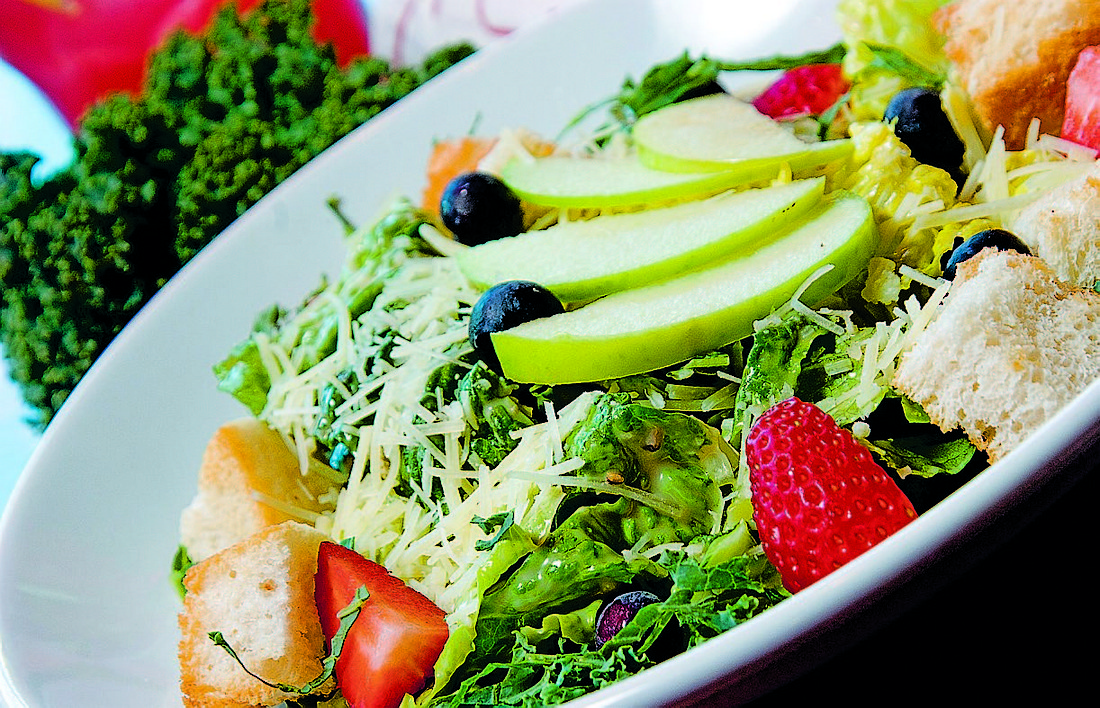- April 19, 2024
-
-
Loading

Loading

Kale has to be on of the most highly praised foods of our time. Among its sobriquets are “the queen of greens,” “nutritional powerhouse” and “superfood.” It is almost too-good-for-you-to-be-true: rich in vitamins A, D and K, omega-3s, iron, folate; minerals including magnesium, copper, potassium, manganese and phosphorous; lutein, calcium, carotenoids and flavonoids. Eating kale, thus, has benefits from boosting the body’s immune systems to lowering cholesterol; from promoting heart and eye health to strengthening skin and bones; and enhancing metabolism.
Nutritional value, however, is not necessarily what attracts people to kale. That takes a potentially new and rewarding taste experience. And, what caught the Foodie’s eye and interest to this wonder green was a post from restaurateur Sean Murphy; an endorsement that, de facto, goes beyond nutrition to the pleasures of the palate.
Murphy says he became enamored with kale while spending time in Seattle. He considers that part of the country “really where it’s happening with food right now.”
“We got turned on to the textures of different greens; the standards, like spinach, romaine and arugula, only go so far, and other greens liven up salads taste and texture-wise,” says Murphy.
The entrepreneur’s restaurants are celebrating kale right now because it is one of the brassica family of vegetables, along with cabbage, broccoli, cauliflower and Brussels sprouts. They all grow best in cool weather, and some, including kale, actually taste better after a good shot of cold, even a little light frost. Florida has probably had as much of that weather as we are gong to get this year, so the Manatee County farmers who grow greens for Murphy are delivering what amounts to their “winter harvest.”
His kale actually has quite a pedigree. It comes from Aaron Welch, Ph.D, and his wife, Janet, who grow it on their 1.5-acre spread in east Bradenton. Welch is a plant pathologist who did agricultural research for DuPont for 30 years. Resisting retirement, he created a large hobby garden to grow food, at first for his family and friends, and now for the restaurants, as well.
Welch describes kale as “yuppie collards,” deftly positioning it as a shade more refined than its close cousin. He says both are really hardy plants that grow well in a good range of temperatures and are almost impervious to freezing. Welch grows two curly cultivars, red Russian and winterbor, in raised beds with plastic mulch and drip irrigation so they thrive with minimal input of water and nourishment.
There are many different varieties of kale: ornamental and edible, flat and curly leaved, red and green.
Murphy is a kale enthusiast. Right now, his Beach Bistro is offering it sauteed, roasted as a side dish or presentation accompaniment. A Kale’d Caesar salad is on the menu at all three Eat Here locations; it is roughly two-to-one romaine to kale. The restaurant serves it with soft panzanella cubes rather than the traditional hard croutons. Eat Here’s menu also includes an Asian/Greek fusion chicken soup with kale, and you may bump into it as a soup garnish, as well. Looking for something different in that category, Murphy dropped a few leaves in a fryer for a few seconds, added a little salt and pepper and voila! A new garnish for chicken soup.
Welch’s “yuppie collards” is a good a description of kale’s taste. It is unmistakably a cabbage relative, more forceful than cauliflower but considerably milder than collards and most cabbages. Chef, author and the proprietor of Chez Panisse, Alice Waters, says, “Kales have a strikingly distinctive flavor, rich and almost sweet, and what some people describe as minerally or earthy.”
Kale loves garlic and olive oil, bacon and potatoes, apples and walnuts. To prep it, cut off the stem and carefully excise the tough, central rib as you would remove the backbone from a chicken. For salads, cut into a fine julienne. To sauté or use in soups, chop coarsely.
Kale Chips
Try these kale chips as a snack or party food. They are easy, every bit as tasty as their potato counterparts and infinitely richer in nutrient value.
Ingredients:
1 bunch kale
1 to 2 tablespoons olive oil
Fine sea salt
Pepper
Instructions:
Preheat oven to 350 degrees. Wash kale leaves, remove stems, devein carefully and dry well. Put oil in a large shallow bowl, add kale, and using your fingers, rub oil into leaves to coat them. Place them on a thin cookie sheet so they are not touching each other, sprinkle with a little fine sea salt and freshly ground pepper and roast in the upper third of the oven for approximately 15 to 20 minutes. Cool on racks. These will stay crisp out in the open, at least overnight.
This is one of those deceptively simple recipes with many variables, from the thickness of the cookie sheets and the kale leaves to the size of your oven, etc. Different recipes call for temperatures from 250 degrees to 425 degrees, with corresponding variations in time, so watch carefully and learn what works in your kitchen.